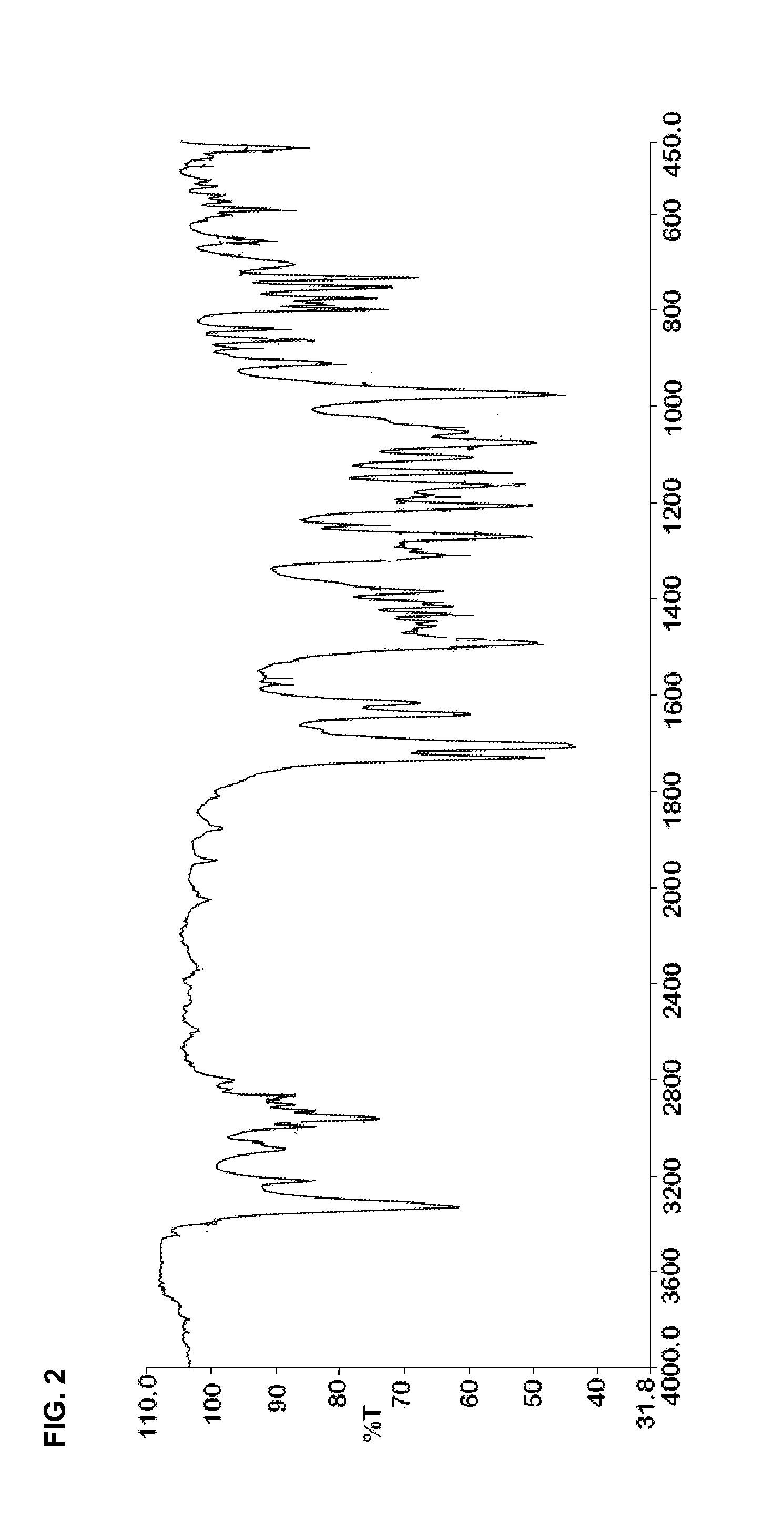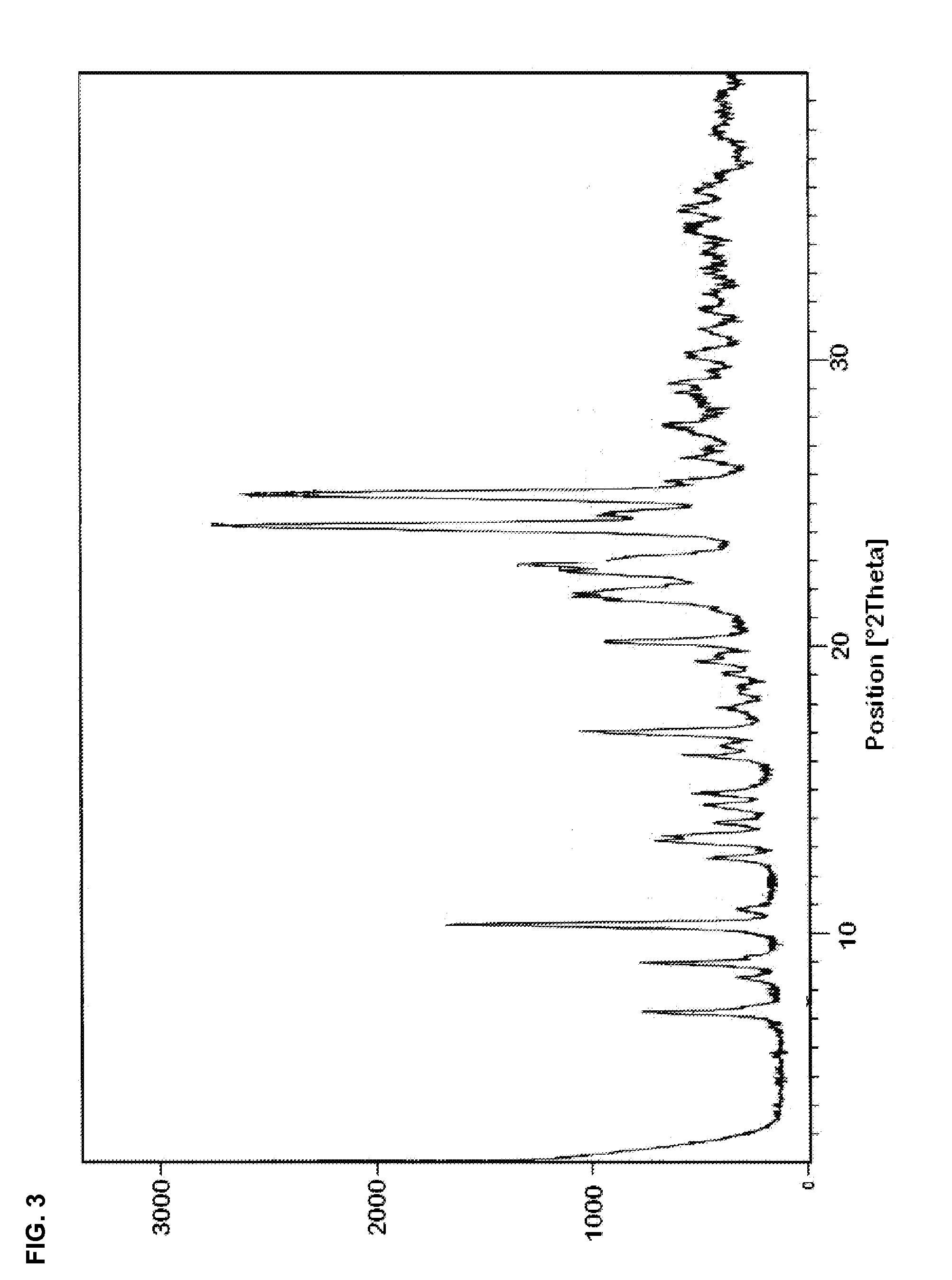Preparation of dihydropyridines
a technology of dihydropyridine and dihydropyridine, which is applied in the preparation of ester-hydroxy reactions, chemical instruments and processes, organic chemistry, etc., can solve the problems of affecting affecting the quality of pharmaceutical products, and suffering a worldwide commercial shortage. , to achieve the effect of improving the performance of pharmaceutical products, improving purity and yield, and easy isolation and purification
- Summary
- Abstract
- Description
- Claims
- Application Information
AI Technical Summary
Benefits of technology
Problems solved by technology
Method used
Image
Examples
example 1
Preparation of benzylidine tert-butyl ester (Compound III)
[0235]50 g (0.285 mol) of 2,3-dichlorobenzaldehyde, 54.17 g (0.342 mol) tert-butyl 3-oxobutanoate, 1.45 g (0.017 mol) of piperidine, 200 ml isopropanol and 1.02 g (0.017 mol) acetic acid were charged in a one liter flask fitted with a reflux condenser. The reaction mass was heated up to 50° C. and stirred for 1 hour. Afterwards, the mixture was cooled down to 25-30° C. and stirred for 15 hours. The mixture was further cooled to 10-15° C. and stirred for 2 hours. The reaction mass was filtered and washed with 25 ml of chilled isopropanol and 50 ml of hexane. The white coloured solid was dried under reduced pressure at 50-55° C. for 7-8 hours. Yield: 70 g, Molar yield: 77.78%, HPLC purity: 98-99% and m.p.: 94 to 96° C.
example 2
Preparation of benzylidine acid (2-acetyl-3-(2′,3′-dichlorophenyl) prop-2-enoic acid) (Compound II)
[0236]70 g (0.222 mol) of benzylidine tert-butyl ester and 420 ml of formic acid (98-100%) were charged in a one liter flask fitted with reflux condenser and heated up to 50° C. The reaction mass was stirred for half an hour, followed by cooling and stirring at 25-30° C. for 7-8 hours. Formic acid was removed by distillation under reduced pressure at 45-50° C. Afterwards, 140 ml of toluene were charged and distilled out under vacuum at 50° C. Additional 140 ml of toluene were charged and stirred at 25-30° C. for 2 hours. The reaction mass was filtered and the precipitate dried at 50-55° C. for 8-10 hours. Yield: 48 g, Molar yield: 83.4%, White coloured solid, HPLC purity: 99.68% (Mixture of cis and trans isomers are present in a ratio of 61.79 and 38.02% respectively).
[0237]IR (cm−1): 2931.2, 2625.58, 2540.8, 1733.6, 1623.2, 1675, 1450, 1411.3, 1363.4, 1285.7, 1274.5, 1235.5, 1182.8, 1...
example 3
Preparation of benzylidine Acid (2-acetyl-3-(2′,3′-dichlorophenyl) prop-2-enoic acid) (Compound II)
[0238]50 g (0.158 mol) of benzylidine tert-butyl ester and 173 ml of sulfuric acid (50% v / v) were charged in a 0.25 liter flask and stirred for 7-8 hours at 25-30° C. The reaction mass was filtered and washed with 100 ml water. The obtained wet cake (35 gm) was stirred in 100 ml toluene at 25-30° C. for 1 hour. The solid was filtered and the product dried at 50-55° C. for 8-10 hours. A white solid obtained. Yield: 32.8 g, Molar yield: 80.15%, HPLC purity: 98.85% (Mixture of cis and trans isomers in the ratio of 39.93 and 60.06% respectively).
PUM
| Property | Measurement | Unit |
|---|---|---|
| mole ratio | aaaaa | aaaaa |
| temperature | aaaaa | aaaaa |
| temperature | aaaaa | aaaaa |
Abstract
Description
Claims
Application Information
 Login to View More
Login to View More - R&D
- Intellectual Property
- Life Sciences
- Materials
- Tech Scout
- Unparalleled Data Quality
- Higher Quality Content
- 60% Fewer Hallucinations
Browse by: Latest US Patents, China's latest patents, Technical Efficacy Thesaurus, Application Domain, Technology Topic, Popular Technical Reports.
© 2025 PatSnap. All rights reserved.Legal|Privacy policy|Modern Slavery Act Transparency Statement|Sitemap|About US| Contact US: help@patsnap.com



